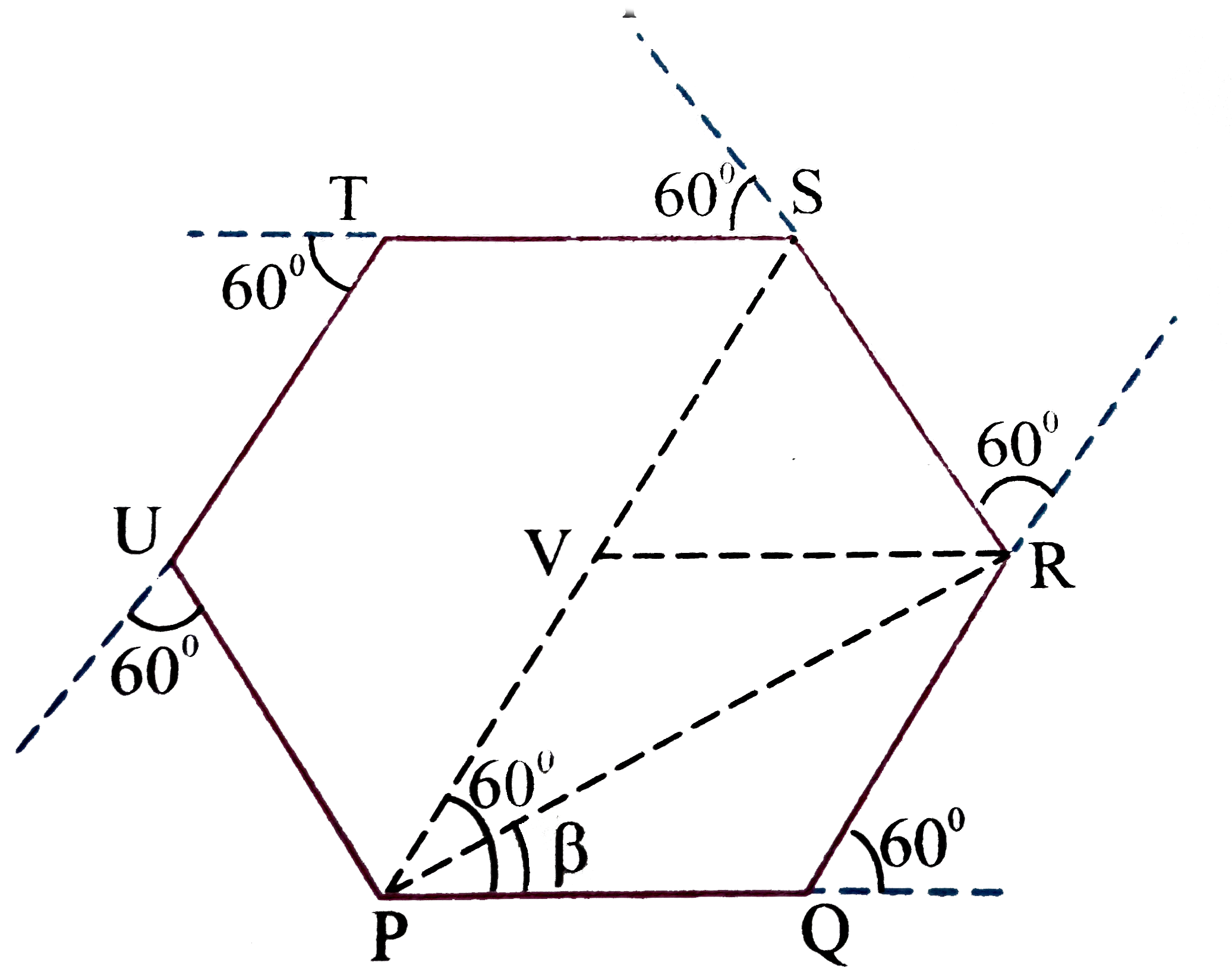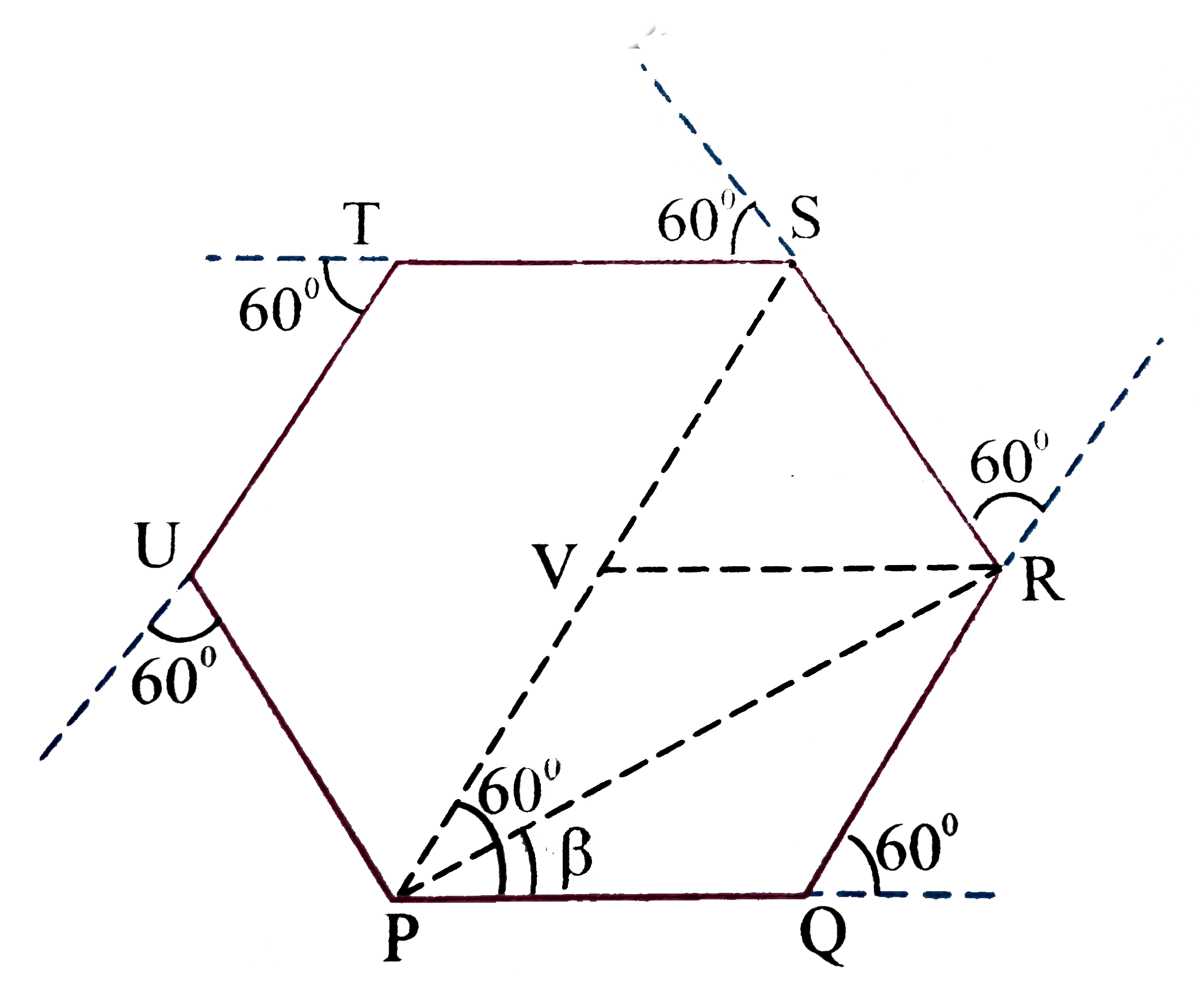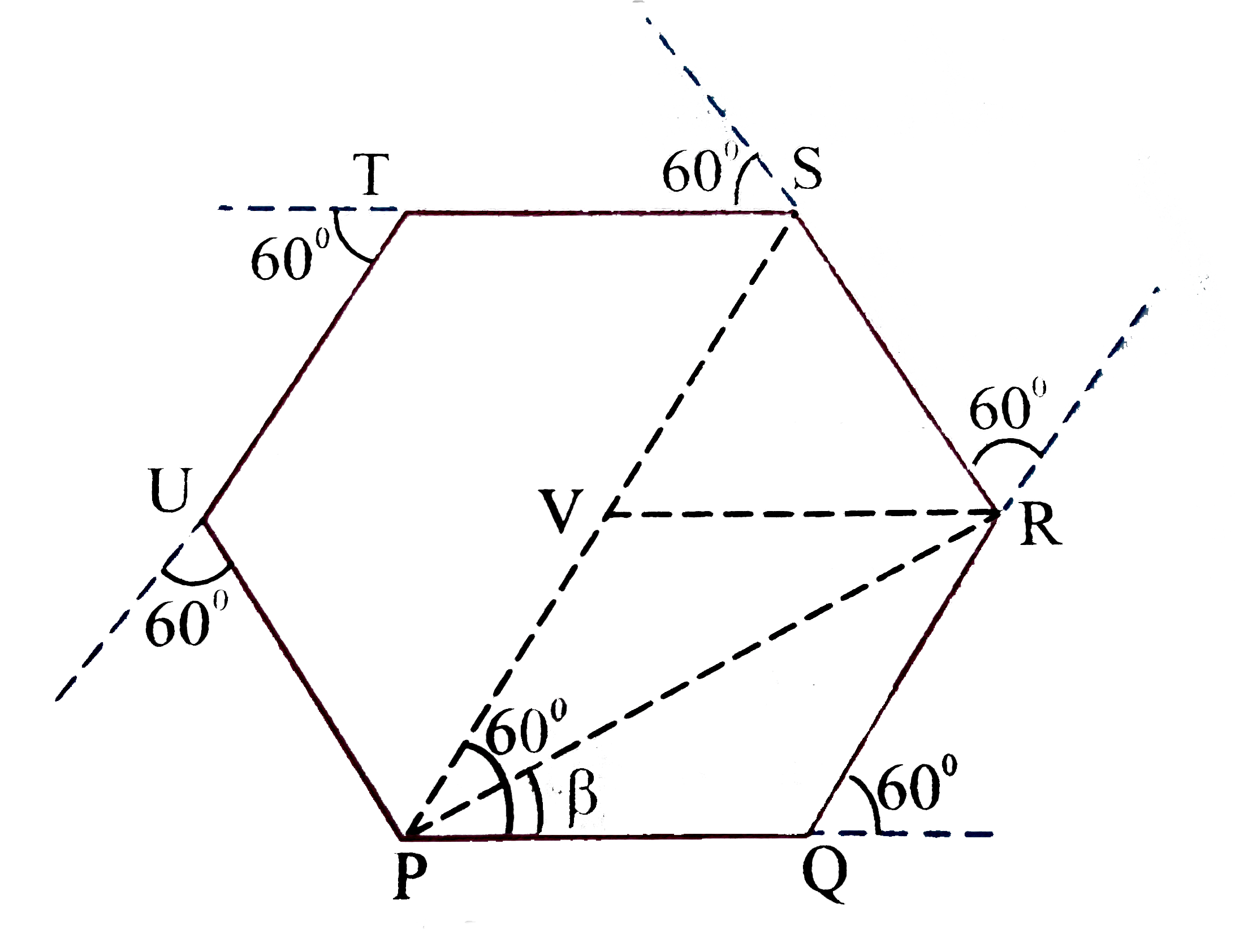Complete Solutions to C.U.Q of chapter MOTION IN A PLANE of Class 11 book with complete answers and questions
| Class 11 | PHYSICS |
| Chapter | MOTION IN A PLANE |
| NARAYANA | C.U.Q |
| Number Of Questions | 36 |
| Academic Year | 2023-24 |
If `vec A+vec B=vec C` and the angle between `vec A` and `vec B` is `120^(@)`, then the magnitude of `vec C`
View SolutionWhen two vectors `vecA` and `vecB` of magnitudes `a` and `b` respectively are added, the magnitude of resultant vector is always
View SolutionIf `vec C=vec A+vec B` then
View SolutionThree forces start acting simultaneously on a particle moving the velocity `vecV`. The forces are represented in magnitude and direction by the three sides of a triangle `ABC` (as shown). The particle will now move with velocity

View SolutionThe minimum number of forces of equal magnitude in a plane that can keep a particle in equilibrium is
View SolutionThe minimum number of unequal forces in a plane that can keep a particle in equilibrium is
View SolutionHow many minimum number of coplanar vector having different magnitudes can be added to give zero resultant?
View SolutionA train is moving due east and a car is moving due north with equal speeds. A passenger in the train finds that the car is moving towards
View SolutionA bus moves over a straight level road with a constant acceleration a. A boy in the bus drops a ball out side. The acceleration of the ball w.r.t the bus and the earth are respectively
View SolutionA particles `P` moves with speed `v` along `AB` and `BC`, sides of a square `ABCD`. Another particle `Q` also starts at `A` and moves with the same speed but along `AD` and `DC` of the same square `ABCD`. Then their respective changes in velocities are
View SolutionA river is flowing from east to west at a speed of `5m//min`. A man on south bank of river, capable of swimming `10m//min` in still water, wants to swim across the river in shortest time. He should swim
View SolutionA hunter aims his fun and fires a bullet directly at a monkey on a tree. At the instant the bullet leaves the gun, the monkey drops. The bullet
View SolutionKeeping the speed of projection constant, the angle of projection is increased from `0^(@)` to `90^(@)`. Then the horizontal range of the projectile
View SolutionKeeping the speed of projection constant, the angle of projection is increased from `0^(@)` to `90^(@)`. Then the maximum height of the projectile
View SolutionThe path of one projectile as seen from another projectile is a (if horizontal components of velocities are equal)
View SolutionTwo particles are projected with same speed but at angles of projection `(45^(@)-theta)` and `(45^(@)+theta)`. Then their horizontal ranges are in the ratio of
View SolutionThe acceleration of a projectile relative to another projectile is
View SolutionA stone is just dropped from the window of a train moving along a horizontal straight track with uniform speed. The path of the stone is
View SolutionA bomb is dropped from an aeroplane flying horizontally with uniform speed. The path of the bomb of
View Solution`A` and `B` are two trains moving parallel to each other. If a balls is thrown vertically up from the train `A`, the path of the ball is
View SolutionA ball is thrown from rear end to the front end of a compartment of a train which is moving at constant horizontal velocity. An observer sitting in the compartment and another observer standing on the ground draw the trajectory of the ball. They will have
View SolutionFor body thrown horizontally from the top of a tower,
View SolutionA body is projected from a point with different angles of projections `20^(@),35^(@),45^(@),60^(@)` with the horizontal but with same initial speed. Their respective horizontal but with same initial speed. Their respective horizontal ranges are `R_(1),R_(2),R_(3)` and`R_(4)`. Identify the correct order in increasing order
View SolutionTwo particles are projected from the same point with the same speed at different angles `theta_(1)` and `theta_(2)` to the horizontal. If their respective times of flights are `T_(1)` and `T_(2)` and horizontal ranges are same then
a) `theta_(1)+theta_(2)=90^(@)` ,
b)`T_(1) =T_(2)tan theta_(1)`
c.`T_(1) =T_(2)tan theta_(2)` ,
d) `T_(1)sin theta_(2)=T_(2)sin theta_(1)`
View SolutionTwo bodies are projected at angles `30^(@)` and `60^(@)` to the horizontal from the ground such that the maximum heights reached by them are equal then
a) Their times of flight are equal
b) Their horizontal ranges are equal
c) The ratio of their initial speeds of projection is `sqrt3:1`
d) Both take same time to reach the maximum height.
View SolutionA body is projected with an initial speed of `100sqrt3ms^(-1)` at an angle of `60^(@)` above the horizontal. If `g=10ms^(-2)` then velocity of the projectile
a) is perpendicular to it’s acceleration at the instant `t=15 sec`.
b) Is perpendicular to initial velocity of projection at `t=20 sec.`
c) Is minimum at the highest point
d) Changes both in magnitude and direction, during its flight.
View SolutionA paricle is moving along a circular path with uniform speed. Through what angle does its angular velocity change when it completes half of the circular path?
View SolutionA car of mass `m` moves in a horizontal circular path of radius `r` metre. At an instant its speed is `V m//s` and is increasing at a rate of `a m//sec^(2)`.then the acceleration of the car is
View SolutionConsider the following two statements `A` and `B` and identify the correct choice
`A)` When a rigid body is rotating about its own axis, at a given instant all particles of body posses same angular velocity.
`B)` When a rigid body is rotating about its own axis, the linear velocity of a particle is directly proportional to its perpendicular distance from axis
View SolutionSuppose a disc is rotating counter clockwise in the plane of the paper then
View Solution`vecA,vecB,vecC,vecD,vecE` and `vecF`are coplanar vectors having the same magnitude each of `10 units` and angle between successive vectors is `60^(@)`
The magnitude of resultant is
View Solution`vecA,vecB,vecC,vecD,vecE` and `vecF`are coplanar vectors having the same magnitude each of `10 units` and angle between successive vectors is `60^(@)`
If `vecA` is reversed the magnitude of resultant is
View Solution`vecA,vecB,vecC,vecD,vecE` and `vecF`are coplanar vectors having the same magnitude each of `10 units` and angle between successive vectors is `60^(@)`
If `vecA,vecB`&`vecC` is reversed the magnitude of resultant is
View SolutionOn an open ground, a motorist follows a track that turns to his left by an angle of `60^(@)` after every `500 m`. Starting from a given turn, The path followed by the motorist is a regular hexagon with side `500 m`, as shown in the given figure specify the displacement of the motorist

at the end of third turn.
View SolutionOn an open ground, a motorist follows a track that turns to his left by an angle of `60^(@)` after every `500 m`. Starting from a given turn, The path followed by the motorist is a regular hexagon with side `500 m`, as shown in the given figure specify the displacement of the motorist

at the end of sixth turn.
View SolutionOn an open ground, a motorist follows a track that turns to his left by an angle of `60^(@)` after every `500 m`. Starting from a given turn, The path followed by the motorist is a regular hexagon with side `500 m`, as shown in the given figure specify the displacement of the motorist

at the end of eighth turn.
View Solution
C.U.Q questions and complete solutions for chapter MOTION IN A PLANE of NARAYANA PHYSICS (HINGLISH) of Class 11
All Exercises from NARAYANA Class 11 PHYSICS MOTION IN A PLANE
- C.U.Q
- Example
- Integer
- Level -V Multi answer
- Level -V Passage
- Level -V Single answer
- Level-I (H.W)
- Level-I(C.W)
- Level-II(C.W)
- Level-II(H.W)
- Level-III(C.W)
- Level-Vi Integer
- Level-Vi multiple answer
- Level-VI Passage answer
- Level-Vi single answer
- NCERT BASED QUES. MORE THAN ONE OPTION
- NCERT BASED QUES. PASSAGE
- NCERT BASED QUES. SINGLE ANS.